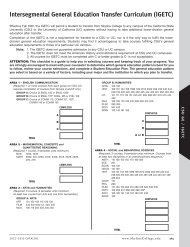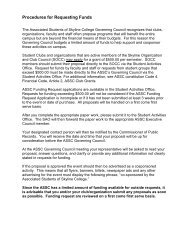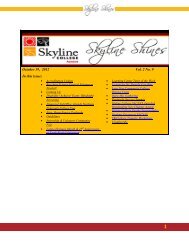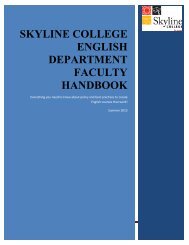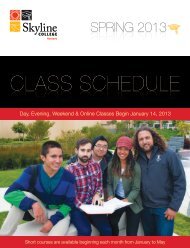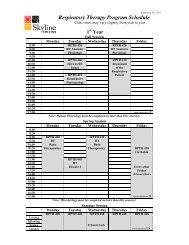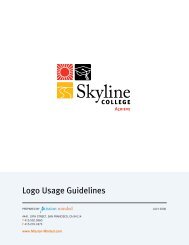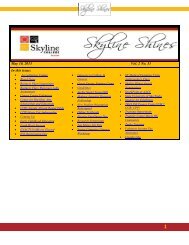Biol 215 Genetics. p. 1 of 4 1. In squash a gene for white color (W) is ...
Biol 215 Genetics. p. 1 of 4 1. In squash a gene for white color (W) is ...
Biol 215 Genetics. p. 1 of 4 1. In squash a gene for white color (W) is ...
Create successful ePaper yourself
Turn your PDF publications into a flip-book with our unique Google optimized e-Paper software.
BIOL <strong>215</strong> <strong>Genetics</strong>. p. 3 <strong>of</strong> 328. The diagram shows three <strong>gene</strong>rations <strong>of</strong> the pedigree <strong>of</strong> deafness in a family. Black circles indicate deafpersons. An arrow on a circle indicates a male, a cross below a circle a female. Stale whether the condition <strong>of</strong>deafness in th<strong>is</strong> family <strong>is</strong> inherited asa. a dominant autosomal character<strong>is</strong>ticb. a recessive autosomal character<strong>is</strong>ticc. a X-linked dominant character<strong>is</strong>ticd, a X-linked recessive character<strong>is</strong>tice. a holandric character<strong>is</strong>tic29. <strong>In</strong> Drosophila melanogaster there <strong>is</strong> a dominant <strong>gene</strong> <strong>for</strong> gray body <strong>color</strong> and another dominant <strong>gene</strong> <strong>for</strong> normalwings. The recessive alleles <strong>of</strong> these two <strong>gene</strong>s result in black body <strong>color</strong> and vestigial wings respectively. Flieshomozygous <strong>for</strong> gray body and normal wings were crossed with flies that had black bodies and vestigial wings.The F, progeny were then test-crossed, with the following results:Gray body, normal wings 236Black body, vestigial wings 253Gray body, vestigial wings 50Black body, normal wings 61Would you say that these two <strong>gene</strong>s are linked? If so, how many units apart are they on the chromosome?30. <strong>In</strong> rabbits a dominant <strong>gene</strong> produces spotted body <strong>color</strong>, and its recessive allele solid body <strong>color</strong>. Anotherdominant <strong>gene</strong> produces short hair, and its recessive allele long hair. Rabbits heterozygous <strong>for</strong> bothcharacter<strong>is</strong>tics were mated with homozygous recessive rabbits. The results <strong>of</strong> th<strong>is</strong> cross were as follows:Spotted, short hair 96Solid, short hair 14Spotted, long hair 10Solid, long hair 80What evidence <strong>for</strong> linkage <strong>is</strong> shown in th<strong>is</strong> cross? Give the percentage <strong>of</strong> crossing-over and the map d<strong>is</strong>tancebetween the <strong>gene</strong>s.3<strong>1.</strong> <strong>In</strong> Drosophila melanogaster the <strong>gene</strong>s <strong>for</strong> normal br<strong>is</strong>tles and normal eye <strong>color</strong> are known to be about 20 unitsapart on the same chromosome. <strong>In</strong>dividuals homozygous dominant <strong>for</strong> these <strong>gene</strong>s were mated with homozygousrecessive individuals. The F 1 progeny were then test-crossed. If there were 1,000 <strong>of</strong>fspring from the testcross, how many <strong>of</strong> the <strong>of</strong>fspring would you predict would show the crossover phenotypes?32. The crossover frequency between linked <strong>gene</strong>s A and B <strong>is</strong> 40%; between B and C, 20%; between C and D, 10%;between C and A, 20%; between D and B, 10%. What <strong>is</strong> the sequence <strong>of</strong> the <strong>gene</strong>s on the chromosome?33. Suppose that nond<strong>is</strong>junction resulted in the production <strong>of</strong> new individiduals with the following chromosomalabnormalities: XO, XXX, XYY, XXXX, XXXY, XXXXY. <strong>In</strong>dicate the expected phenotypic sex correspondingto each <strong>of</strong> these chromosomal combinations if it occurred (a) in a human; (b) in a Drosophila. How many Barrbodies would there be in human cells showing each <strong>of</strong> these combinations?




